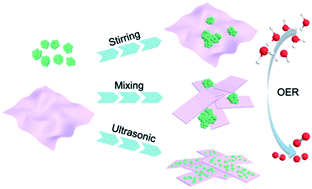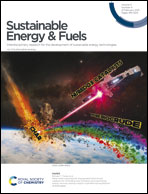Enhanced OER performance of composite Co–Fe-based MOF catalysts via a one-pot ultrasonic-assisted synthetic approach†
Abstract
Metal–organic frameworks (MOFs) have recently emerged as one of the most promising electrocatalysts for oxygen evolution reaction (OER) due to their abundant metal sites and porous structures. However, the limited modulation of the single-metal sites of MOF-based catalysts restricts further promotion of their catalytic performance. In this work, we have developed a composite Co–Fe-based MOF catalyst based on Co–BDC (1,4-benzenedicarboxylate) and Fe–BDC, which modulated the electronic structure via the construction of the heterogeneous interfaces of Co–BDC and Fe–BDC. Enhanced OER performance was achieved in the composite Co–Fe–BDC catalyst, far more exceeding that of the counterpart Co–BDC or Fe–BDC. In addition, it was found that additional ultrasonic treatment effectively facilitated the dispersion of Fe–BDC on Co–BDC, as compared to the composited MOF obtained via physical mixture or magnetic stirring. The composite Co–Fe–BDC catalyst prepared via the ultrasonic-assisted one-pot synthesis exhibited an overpotential of 295 mV at a current density of 10 mA cm−2, which was even superior to that of the commercial RuO2 catalyst, while holding a lower cost and excellent stability. Insights gained in this study may shed new lights on heterogeneous interfaces and composition strategy of MOF-based electrochemical catalysts.



 Please wait while we load your content...
Please wait while we load your content...